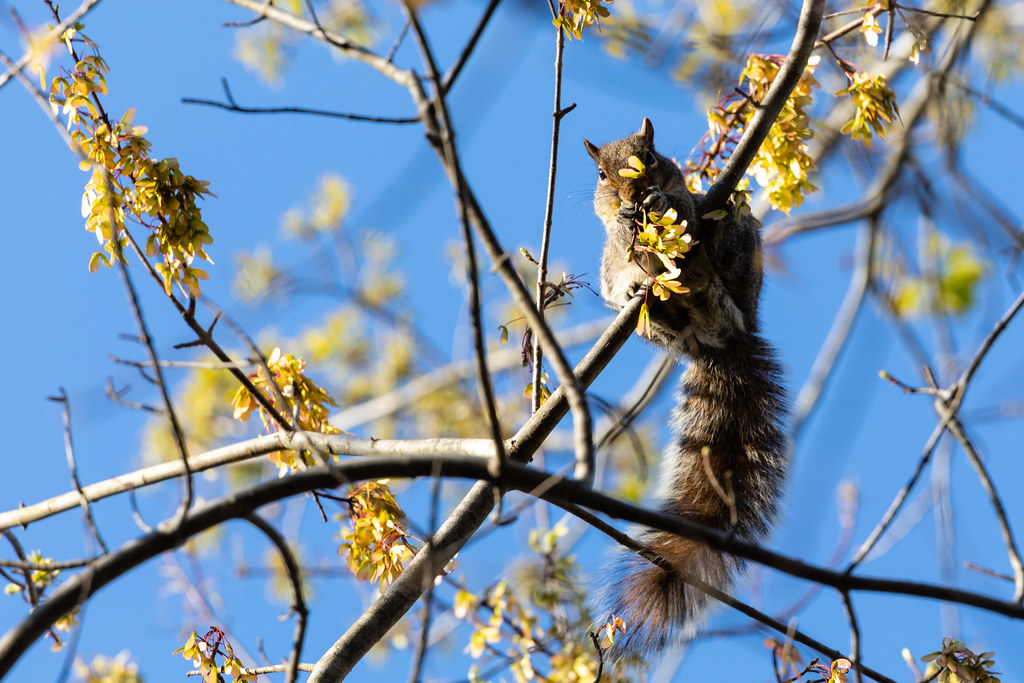Eastern Gray Squirrel
Sciurus carolinensis
The eastern gray squirrel is a grayish-brown, bushy-tailed rodent that lives in forests, parks and backyards throughout the Chesapeake Bay watershed.

Appearance
The eastern gray squirrel has a grayish body with some black, white or brown fur and a whitish belly. Some gray squirrels are completely black; this is called melanism. These squirrels have bushy tails that vary in color from pale gray to brownish. Eastern gray squirrels can grow to 20 inches long and weigh 1.5 pounds.
Feeding
Eastern gray squirrels feed mostly on nuts and acorns from oak, beech, walnut and hickory trees, as well as seeds, fruits, bulbs and flowers from other plants and trees. They will also eat frogs, insects, bird eggs and farm crops such as corn and wheat. They store nuts and seeds at the end of summer to eat throughout the winter.
Predators
Minks, weasels, bobcats, raptors, red foxes and other predatory animals prey on eastern gray squirrels. The squirrels will emit a warning call to let other squirrels know predators are near. They are hard to capture because they can climb and jump among trees quickly and easily.
Voice
Eastern gray squirrels become particularly noisy when alarmed or angry. Chattering, rasping and barking are all examples from the gray squirrel's vocabulary
Reproduction and Life Cycle
Mating occurs twice per year, in December to February and again in May to June. Females nest alone while pregnant. After 44 days, the female gives birth to 2 to 3 blind, naked young. The female cares for her young until they are weaned at about 10 weeks old. Males reach sexual maturity at 11 months old, while females mature at about 15 old. Eastern gray squirrles can live up to 12 years in the wild.
Did You Know?
- The gray squirrel creates a permanent den within tree cavities or in nests of leaves and twigs on a tree crotch.
- In September, some young gray squirrels will leave their current area to find a new place to live and establish their own home range.
- The gray squirrel’s bushy tail has a number of uses, including balance, warmth and protection from the weather, and communicating with other squirrels.
Sources and Additional Information
- Gray Squirrel Fact Sheet – Maryland Department of Natural Resources
- Animal Diversity Web: Sciurus carolinensis – University of Michigan Museum of Zoology
- Eastern Gray Squirrel – U.S. Fish and Wildlife Service
